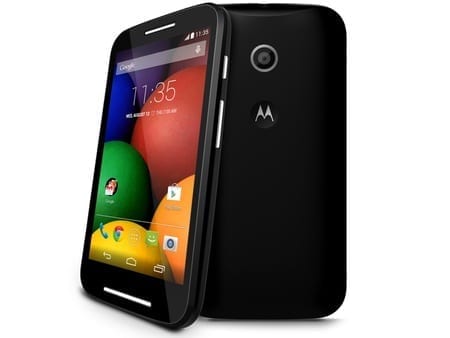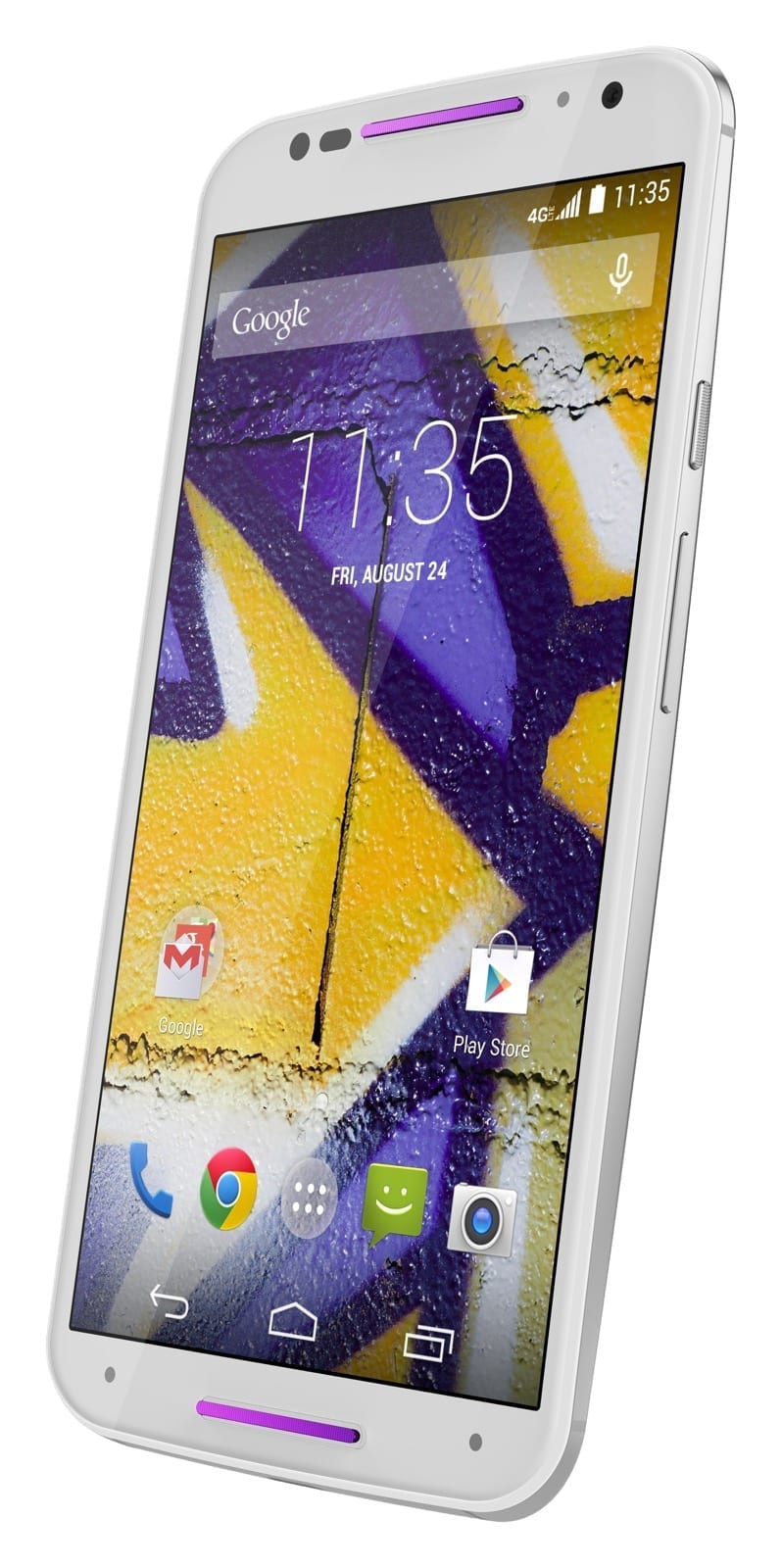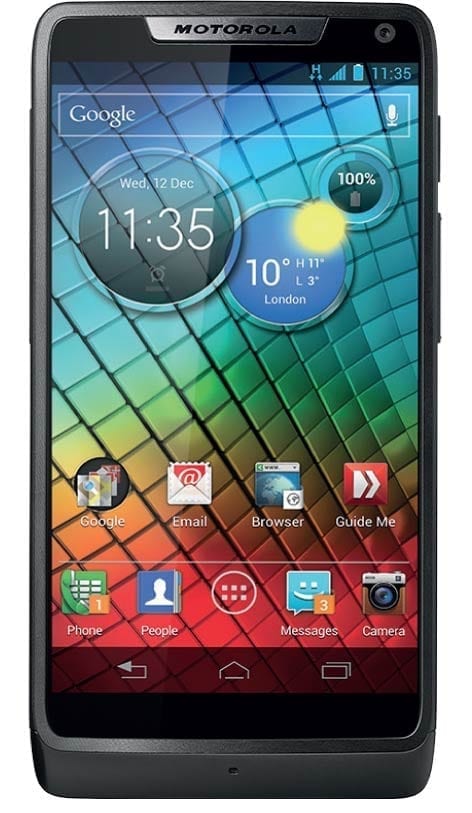
Motorola smartphones on a budget: Which is the best model for you?
Having now got every single budget Motorola smartphone (bar one) since the first Moto G hit the shelves in November 2013, with the Moto E marking its debut soon after, I thought it was as good a time as any to see how each successive model compares against the last.
UPDATE: On Tuesday July 28th 2015, Motorola will launch the latest Moto G (2015) which will finally come with a newer Snapdragon chipset, an upgraded camera, waterproofing and potentially other new features. In due course, this guide will be updated. But for now, here’s a comparison of all the existing models and some reasons why you might still be able to grab a real bargain by going for an earlier model.
It must seem rather confusing to anyone thinking of buying one of these highly affordable smartphones, so hopefully this guide will help to explain the key, and sometimes rather subtle, changes.
Logic suggests you’d buy the very latest model every time, but the older models can still be found if you hunt around (and there’s also the second hand market too).
As you’ll find from the benchmarking test, there’s not a great deal of difference between one Moto G and another, so even the original model might be perfectly adequate. Especially considering the fact that every model has Android Lollipop already available or coming very soon.
In addition to lining up every model, bar the 4G version of the Moto G (the one model I don’t have), I opted to do a comparison with the flagship Moto X (2014).
It gives a sense of perspective, although in the real world every phone here works very well unless you’re after a phone for heavy 3D gaming (which I’ll assume you aren’t, or else you wouldn’t even be here).
I also searched back a bit further to include an Intel-powered Razr i. This is a single-core phone that’s approaching its third birthday and will probably be considered a dinosaur in the fast moving world of mobile technology.
The Razr i was a bit of an oddity and never really had mainstream success (partly due to it coming at a time when Motorola had poor distribution and little network interest outside of the US), but as you’ll see, it stands up surprisingly well.
All things considered, Motorola is really doing some great stuff and providing highly affordable alternatives to the £500-600+ flagships being released today.
The Benchmarking Results
Given how close all the Moto G scores were, and allowing for fluctuations that occur with every test, it’s clear that all of them should be placed joint third. If I had the 4G first generation model then it would almost certainly give a near identical result too.
You can also see the Moto X way out in the lead, but don’t let that put you off if you simply want something with good battery life, a decent display, good audio (especially the Moto G’s with dual speakers) and the option of 4G.
For that, all of the devices here are possible contenders with perhaps the exception of the first generation Moto E, let down by a poor camera and minuscule internal storage.
| Position | Model | Score |
| 1 | Moto X (2014) | 46,786 |
| 2 | Moto E 4G 2nd Gen | 22,420 |
| 3 | Moto G 2nd Gen | 18,773 |
| 3= | Moto G 1st Gen | 18,761 |
| 3= | Moto G 4G 2nd Gen | 18,559 |
| 6 | Razr i (2012) | 17,382 |
| 7 | Moto E 1st Gen | 14,245 |
The Handsets At-a-Glance (in release order)

The original Moto G (November 2013)
The phone that put Motorola back on the map, and more importantly got Motorola back into the game.
Motorola sold a mountain of phones, pushing the company into the top ten in terms of handset sales.
Like future models, Motorola has been quick to release OS updates – although the release of Lollipop was delayed due to various bugs, that saw the US only roll out halted elsewhere, until the process restarted with Android 5.0.2.
Hopefully this was just a small glitch, and we’ll see more timely updates restarting once Google can fix a range of issues that appear to be present even in 5.1.
The specs
- 3G only (Micro-SIM) and single band Wi-Fi (2.4GHz)
- Chipset: 1.2GHz Quad-core Snapdragon 400 with 1GB RAM
- Display: 4.5-inches, 720×1280 pixels (326PPI) LCD
- Camera: 5-megapixel with flash
- Size: 129.9 x 65.9 x 11.6mm / 143g
- Storage: 8 or 16GB internal (no expansion)
- Audio: Single speaker
- Battery: 2,070mAh
- Customisation: Changeable rear covers / flip cover (with magnet for auto on/off)


Moto E (May 2014)
An even lower budget entrant, but still with an impressive specification to match its lower and even more affordable price. Unlike the original Moto G, the Moto E saw the introduction of a memory card slot.
Let down due to a disappointing camera without flash, and a very tiny amount of available storage space for apps and games (with not every app or game being able to install on the memory card).
The specs
- 3G only (Micro-SIM) and single band Wi-Fi (2.4GHz)
- Chipset: 1.2GHz Dual-core Snapdragon 200 with 1GB RAM
- Display: 4.3-inches, 540×960 pixels (256PPI) LCD
- Camera: 5-megapixel without flash
- Size: 124.8 x 64.8 x 12.3mm / 142g
- Storage: 4GB internal + microSDXC slot
- Audio: Single speaker
- Battery: 1,980mAh
- Customisation: Changeable rear covers



Moto G 4G (May 2014)
The long awaited addition of 4G for the original Moto G, with support for Cat 4 LTE (150Mbps down, 50Mbps up).
Out goes the 16GB model for a fixed 8GB one, but now with a memory card slot, with the ability to install (some) apps and games to the memory card.
The specs
- 4G (Micro-SIM) and single band Wi-Fi (2.4GHz)
- Chipset: 1.2GHz Quad-core Snapdragon 400 with 1GB RAM
- Display: 4.5-inches, 720×1280 pixels (326PPI) LCD
- Camera: 5-megapixel with flash
- Size: 129.9 x 65.9 x 11.6mm / 143g
- Storage: 8GB internal + microSDXC slot
- Audio: Single speaker
- Battery: 2,070mAh
- Customisation: Changeable rear covers / flip cover (with magnet for auto on/off)


Moto G 2nd Generation (September 2014)
One step forward, two steps back? Perhaps, if you valued 4G access. But the second generation Moto G boosted the screen size and camera resolution, as well as giving UK customers dual-SIM slots.
It also got dual front-facing speakers. Not quite as loud as an HTC with BoomSound, but still very good and quite unique at its price point.
As with almost all dual-SIM phones, only one SIM can be active on 3G (for data) at any given time, meaning the other drops to 2G-only.
Something to note if you were thinking of using a Three SIM in the device, as it will not work at all if you activate data on the other account.
The specs
- 3G dual-SIM (Micro-SIM) and single band Wi-Fi (2.4GHz)
- Chipset: 1.2GHz Quad-core Snapdragon 400 with 1GB RAM
- Display: 5-inches, 720×1280 pixels (294PPI) LCD
- Camera: 8-megapixel with flash
- Size: 141.5 x 70.7 x 11mm / 149g
- Storage: 8GB internal + microSDXC slot
- Audio: Dual speaker
- Battery: 2,070mAh
- Customisation: Changeable rear covers / flip cover (with magnet for auto on/off)


Moto G 4G 2nd Generation (March 2015)
Technically, the inevitable 4G version of the second generation Moto G could be counted as having come out at the end of 2014, but only for a very small number of countries.
It wasn’t until March that Motorola decided to bring it to the UK, and as a single SIM version – although a dual SIM version is also in production. In fact, it appears there’s also a 3G only model too!
The phone is also a little heavier than the 3G version due to the inclusion of a slightly larger battery (2,390mAh over 2,070mAh), but that’s a good thing.
The specs
- 4G (Micro-SIM) and single band Wi-Fi (2.4GHz)
- Chipset: 1.2GHz Quad-core Snapdragon 400 with 1GB RAM
- Display: 5-inches, 720×1280 pixels (294PPI) LCD
- Camera: 8-megapixel with flash
- Size: 141.5 x 70.7 x 11mm / 155g
- Storage: 8GB internal + microSDXC slot
- Audio: Dual speaker
- Battery: 2,390mAh
- Customisation: Changeable rear covers / flip cover (with magnet for auto on/off)


Moto E 4G 2nd Generation (March 2015)
A rather unexpected addition to the family, given the use of a 64-bit Snapdragon 410 chipset, giving it a marked performance boost over all of the Moto G models.
There’s also a larger display over the original Moto E, but with no extra pixels. As such, the display is beginning to look a little blurry compared to the original where the lower resolution just about worked.
The same capacity battery as the latest Moto G also makes this an ideal choice for anyone needing the longest possible battery life.
- 4G (Micro-SIM) (dual-SIM / 3G versions also available in selected markets) and single band Wi-Fi (2.4GHz)
- Chipset: 1.2GHz Quad-core Snapdragon 410 (64-bit) with 1GB RAM
- Display: 4.5-inches, 540×960 pixels (245PPI) LCD
- Camera: 5-megapixel without flash
- Size: 129.9 x 66.8 x 12.3mm / 145g
- Storage: 8GB internal + microSDXC slot
- Audio: Single speaker
- Battery: 2,390mAh
- Customisation: Changeable side ‘Bands’ and grip shells to fit black or white base model
Comparison models


Moto X (2014 model) (September 2014)
Clearly a major spec boost, but also a much more expensive device and only in this feature to give some perspective.
The battery is also somewhat of a disappointment, even with its lower powered (in theory) AMOLED display.
2GB of RAM does improve general use, but the fixed storage will be seen by many as a major step backwards.
In many respects, the low capacity battery and fixed storage raises the same concerns as I have with the Samsung’s Galaxy S6 models.
The specs
- 4G (Nano-SIM) and dual band Wi-Fi (2.4/5GHz with 802.11ac)
- Chipset: 2.5GHz Quad-core Snapdragon 801 with 2GB RAM
- Display: 5.2-inches, 1080×1920 pixels (424PPI) AMOLED
- Camera: 13-megapixel with flash
- Size: 140.8 x 72.4 x 10mm / 144g
- Storage: 16 or 32GB internal (no expansion)
- Audio: Single speaker
- Battery: 2,300mAh
- Customisation: Customisable colours/finishes pre-purchase via MotoMaker web service


Razr i (September 2012)
In 2012 Intel was desperate to get into mobile and the Razr i should have been a perfect showcase.
However, it didn’t quite work out.
Despite it sounding quite weak (single core?) on paper, the performance was surprisingly good. With support for hyper-threading, and a high (2GHz) clock speed, it out performed many other devices on the market at the time.
Perhaps it’s not too surprising that it still performed well in the benchmark test.
It was also small, light, and one of the first devices with Motorola’s ‘Splashguard’ coating to protect it from the elements – a coating now used on most, if not all, Motorola smartphones.
Suffice to say, if you can still find one, it might still be a good buy.
- 3G only (Micro-SIM) and dual band Wi-Fi (2.4/5GHz)
- Chipset: 2GHz Single-core Intel Atom Z2460 with 1GB RAM
- Display: 4.3-inches, 540×960 pixels (256PPI) AMOLED
- Camera: 8-megapixel with flash
- Size: 122.5 x 60.9 x 8.3mm / 126g
- Storage: 8GB internal + microSDXC slot
- Audio: Single speaker
- Battery: 2,0000mAh
- Customisation: None

Good helpful article, thanks